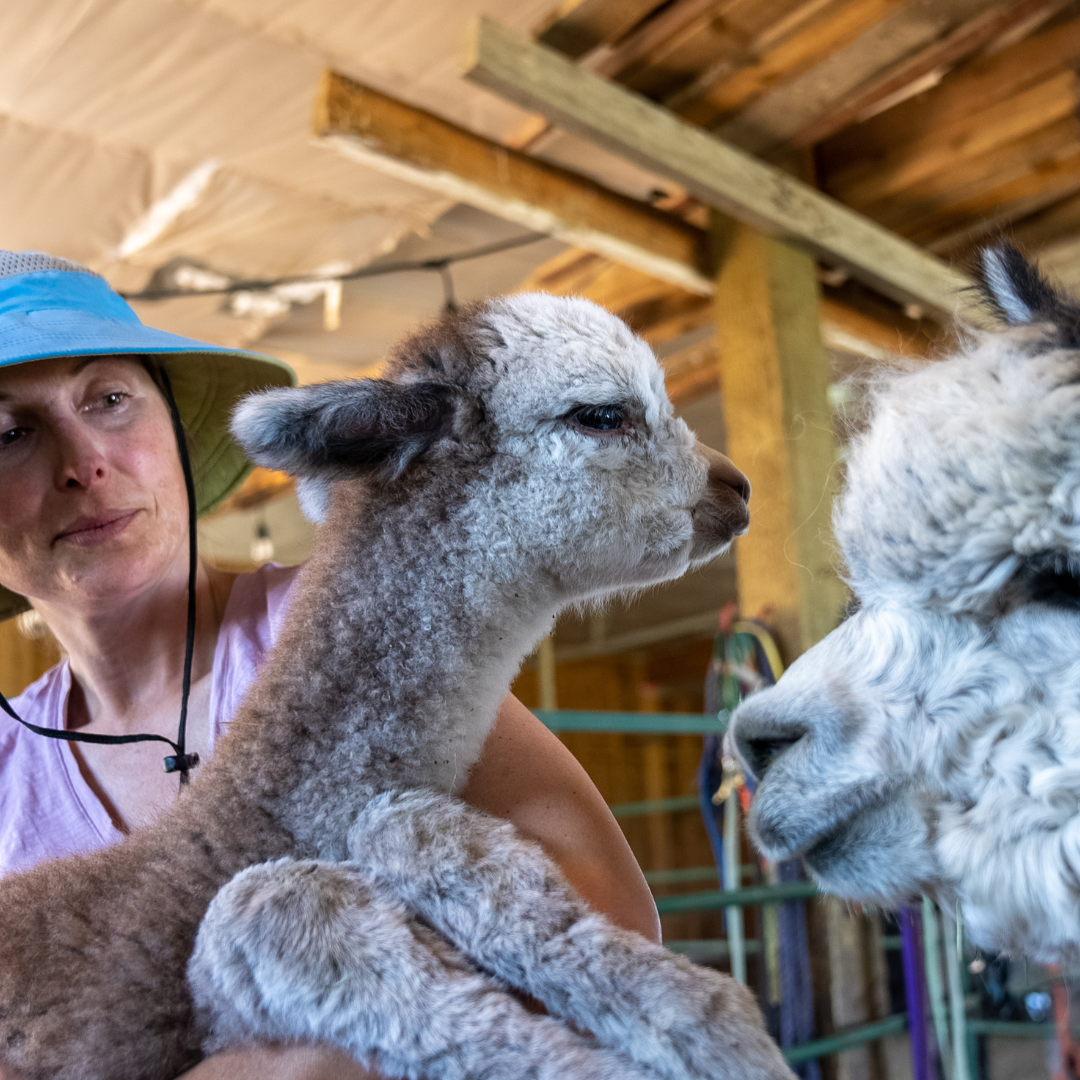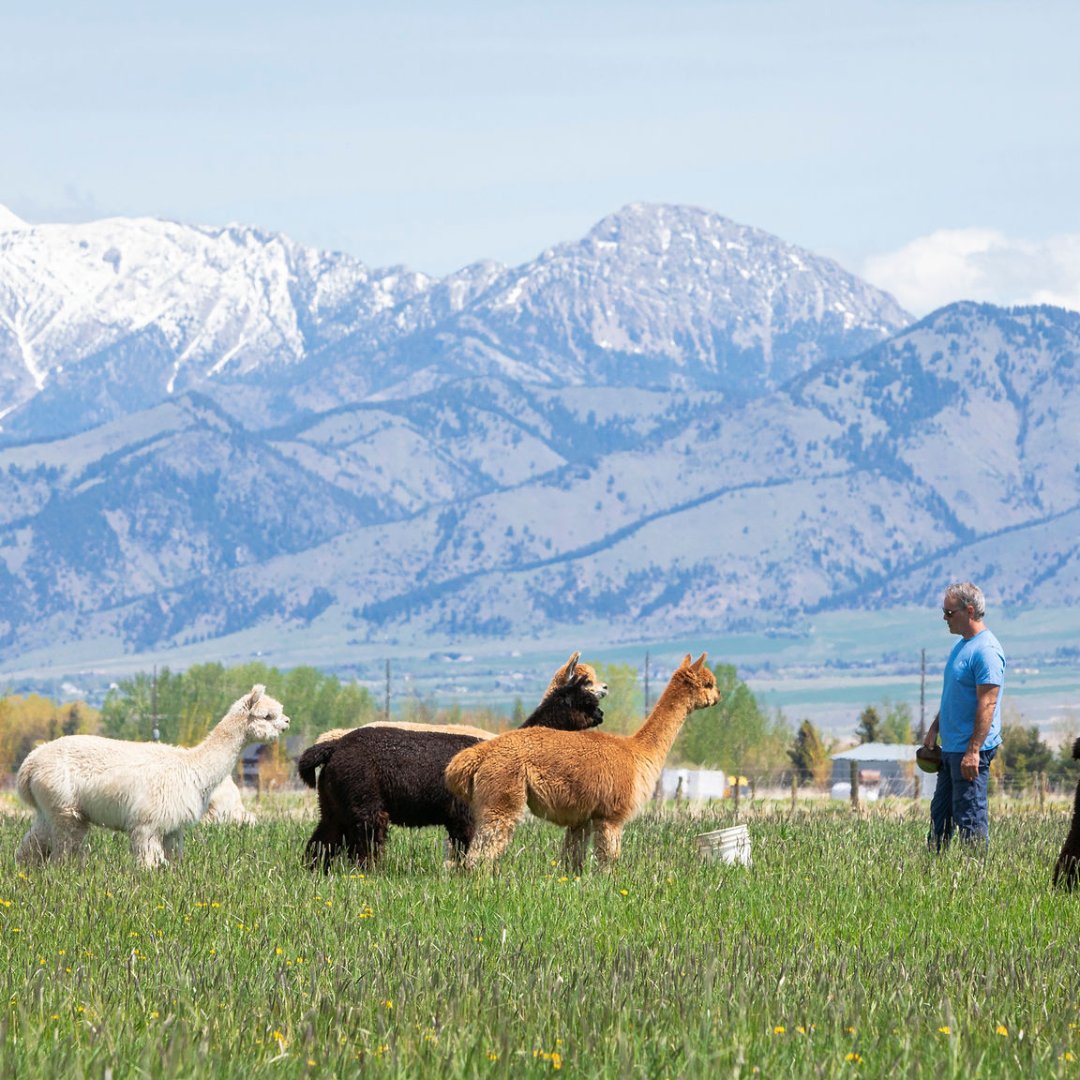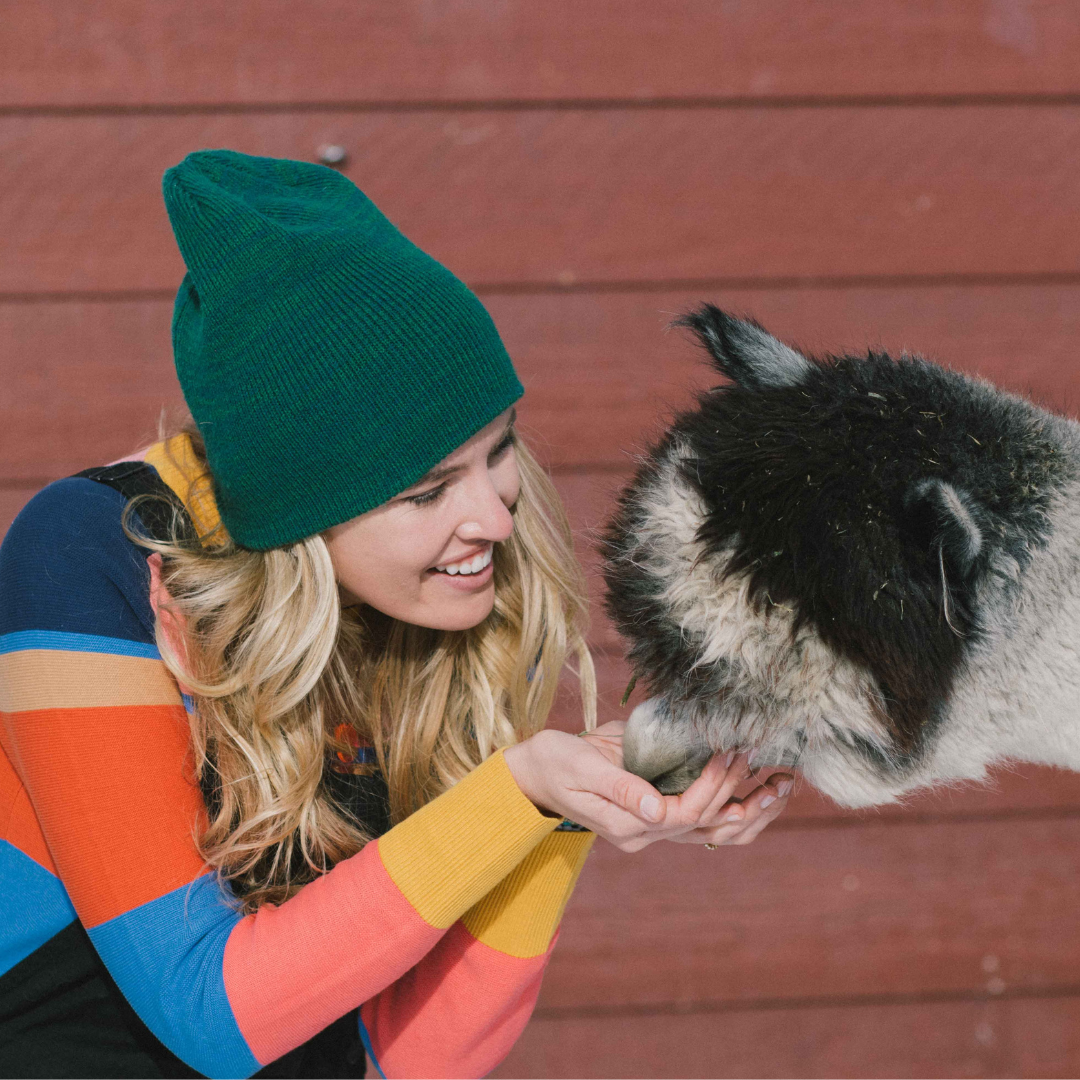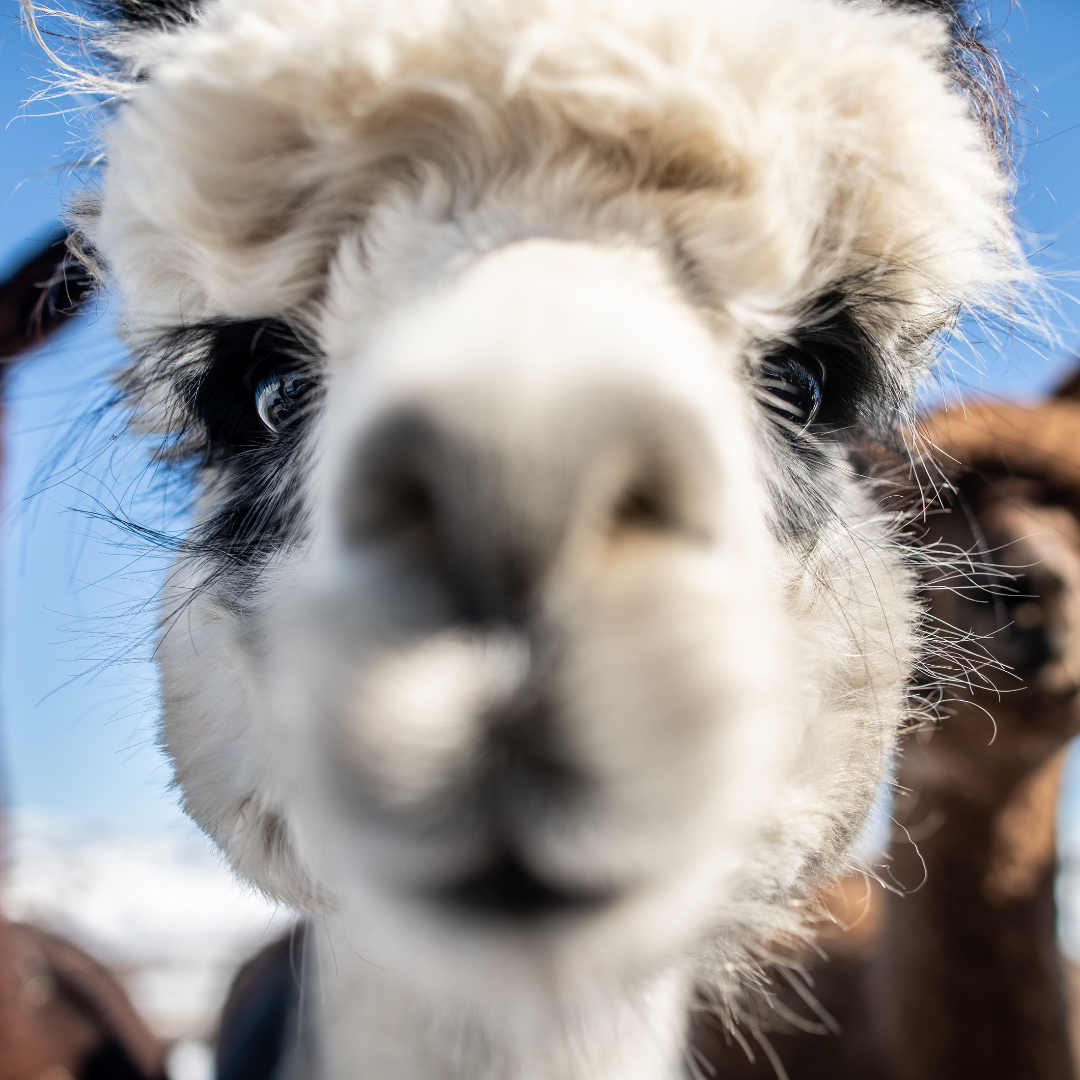As with every business, you always need more inventory than you think. Much of this can double over if you have other animals - horses, cows, dogs, but some are specialty items that really need to be sought out to have an effective farm. With this, I am covering three different areas: starting your alpaca farm, having cria, and the stuff we all really want...but can do without if the budget doesn't call for it. Not everything has to be new - be creative and resourceful to help minimize costs when putting together your farm.
Starting your Alpaca Farm:
 1. Halters and Leads - We suggests going to http://www.usefullamasupplies.com/ and get the Amish X-Style Halters, large. They fit kids and adults alike. Get sturdy lead ropes. We thought we found a treasure at the dollar store once and bought 6 leads for cats. One little pull and the hooks broke and we chased our alpacas in the pasture for the next 30 minutes. Get lightweight ropes. Heavy horse leads are too heave for alpacas.
1. Halters and Leads - We suggests going to http://www.usefullamasupplies.com/ and get the Amish X-Style Halters, large. They fit kids and adults alike. Get sturdy lead ropes. We thought we found a treasure at the dollar store once and bought 6 leads for cats. One little pull and the hooks broke and we chased our alpacas in the pasture for the next 30 minutes. Get lightweight ropes. Heavy horse leads are too heave for alpacas.
 2. Feeders - We use large feeders to hold ourhay, but any size of bin will do. If you use 60 lb bales, create a box that fits it and then put 4 x 4 hogwire panelling on top. This lets alpacas easily pick the grass without getting it in their topknots.
2. Feeders - We use large feeders to hold ourhay, but any size of bin will do. If you use 60 lb bales, create a box that fits it and then put 4 x 4 hogwire panelling on top. This lets alpacas easily pick the grass without getting it in their topknots.
3. Buckets - For water, for feed, for everything.
4. Alpaca Blankets - We do not use ours too often, but just like the rest of us some alpacas get colder than others. $60 is a very worthy investment.
5. Alpaca Reference Books - The Alpaca Magazine, The Alpaca Field Manual and Medicine and Surgery of South American Camelids helps you and your vet know how to identify a potential issue and what to do.
 6.Teeth & Toe Supplies - We trim our alpaca toes with normal garden trimmers, nothing fancy. Some teeth tend to overgrow, so we invested in the Tooth-o-Matic early on. This is a pricey tool, so you may be able to share the expense with local alpaca growers. Most shearers will trim the alpacas' toes and teeth while shearing your alpaca.
6.Teeth & Toe Supplies - We trim our alpaca toes with normal garden trimmers, nothing fancy. Some teeth tend to overgrow, so we invested in the Tooth-o-Matic early on. This is a pricey tool, so you may be able to share the expense with local alpaca growers. Most shearers will trim the alpacas' toes and teeth while shearing your alpaca.
7. Sticks - get any kind of long (3-5'), lightweight stick to help guide your alpacas where you want them to go. Narrow PVC piping will do fine.
8. Manure Tools - Rakes, shovels, wheel barrow - Do not need to be fancy...you will learn how to use them well...
9. Emergency Kit - KY Jelly, gloves, thermometer, Bute, stethoscope, 18 gauge needles, syringe, towels
10. A well set-up pasture - Gates, walkways, shelter (barn or lean-to). Think ALOT about this one if you have the option to set up your farm as you want it. Make it as user friendly for one person to push alpacas from one pasture to another. You can never, ever have enough catch pens.
Cria:
1. The first thing I tell everyone who will have cria in the future is to purchase the Llama and Alpaca Neonatal Care book with Bradford Smith. It's any easy, step by step read. Read it!
2. Cria Care Kit: Bottle of water-based, sterile, lubrication,Plastic Gloves, both short and full arm length
Iodine– preferably at least 2.5% solution, liquid, or a spray bottle,Vet wrap to wrap the dam's tail out of the way,umbilical cord clamp - or clothes pin, pocket knife, old towels if the cria needs to be rubbed dry and warm, scales – bathroom ones, or hanging cria scales, cellphone and vet's phone number
bucket and plastic garbage bag for placenta collection, cria coat
 3. As mentioned above, a cria coat is very useful in case there is a slight breeze when they are born. The newborn size will only last about 2 weeks on the outside, so you may want to get 2 sizes. We've picked up some dog coats and colt coats that work too.
3. As mentioned above, a cria coat is very useful in case there is a slight breeze when they are born. The newborn size will only last about 2 weeks on the outside, so you may want to get 2 sizes. We've picked up some dog coats and colt coats that work too.
4. Heating pad: Unless the baby is born in ideal conditions - a warm, sunny, non-breezy day, they may need a heating pad to get the bloody pumping.
5. Goat Milk and Colostrum. In the Spring, we purchase a gallon of raw goat's milk and freeze it, just in case we need it for a baby who can't nurse or a mother not producing enough milk. When you need it, it has to be immediately available. Homogenized milk from the store is the next best thing. We purchased a box of powdered alpaca colostrum 8 years ago and have only had to give it to a couple of cria "just in case" but I was glad we had it on the shelf.
6. Scale - any kind of scale will do. We usually do not weigh the babies unless we feel something is wrong - premature, not nursing, lethargic. Then, we weight them every day until we are confident they are gaining 1/3 to 1/2 of a pound per day.
7. Easily set up corrals - There has been more than one time that we needed to set up corrals for a mom and cria - in the barn...in the garage... Be sure to put up paneling on the lower area because the baby will get out. Light Livestock has some great alpaca panels - lightweight and easy to maneuver.
8. Thermometer - This is your number 1 indicator if something is wrong with your alpaca - both for the mom and the baby.
9. A good vet - talk to your vet long before the baby starts to come out. Many times, the birth is easy and without problems. But, make sure that have the knowledge and background to be a camelid vet for you.
10. A good mentor - call someone if you have any kind of question. I promise you will never bother someone with a "silly question" about your cria being born. You are bring a new life into the world. Make sure you do everything you can to give it a good start.
The Wish list -
I suppose there is a wish list for everything and this just happens to focus on alpacas -
 1. Automatic watering system - worth every penny and then some if you get it. We were going through 400+ gallons per day, running hoses daily up and down the stairs to get them not to freeze in the winter, having them thaw in your bathtub for 6 months. A worthy investment.
1. Automatic watering system - worth every penny and then some if you get it. We were going through 400+ gallons per day, running hoses daily up and down the stairs to get them not to freeze in the winter, having them thaw in your bathtub for 6 months. A worthy investment.
2. Tooth grinder - As mentioned above, they are pricy but worth it not only aesthetically, but for the health of your alpaca as well.
3. Horse Trailer - Alpacas are able to be transported in just about anything, but having a horse trailer certainly makes it easier to get in an out. We have a 3 horse slant. On trips, we can fit up to 10 in the main area and we sleep in the front. We've put 5 in a minivan and 3 in my Honda civic!
4. Barns - lots of barns. We have 5 right now. The ladies get the nice big barn. The boys have several 12' x 24' barns. When we separate the cria and/ or have a new herd, we separate them with their own shelter and barn.
 2. Feeders - We use large feeders to hold ourhay, but any size of bin will do. If you use 60 lb bales, create a box that fits it and then put 4 x 4 hogwire panelling on top. This lets alpacas easily pick the grass without getting it in their topknots.
2. Feeders - We use large feeders to hold ourhay, but any size of bin will do. If you use 60 lb bales, create a box that fits it and then put 4 x 4 hogwire panelling on top. This lets alpacas easily pick the grass without getting it in their topknots.
 6.Teeth & Toe Supplies - We trim our alpaca toes with normal garden trimmers, nothing fancy. Some teeth tend to overgrow, so we invested in the Tooth-o-Matic early on. This is a pricey tool, so you may be able to share the expense with local alpaca growers. Most shearers will trim the alpacas' toes and teeth while shearing your alpaca.
6.Teeth & Toe Supplies - We trim our alpaca toes with normal garden trimmers, nothing fancy. Some teeth tend to overgrow, so we invested in the Tooth-o-Matic early on. This is a pricey tool, so you may be able to share the expense with local alpaca growers. Most shearers will trim the alpacas' toes and teeth while shearing your alpaca.
 1. Automatic watering system - worth every penny and then some if you get it. We were going through 400+ gallons per day, running hoses daily up and down the stairs to get them not to freeze in the winter, having them thaw in your bathtub for 6 months. A worthy investment.
1. Automatic watering system - worth every penny and then some if you get it. We were going through 400+ gallons per day, running hoses daily up and down the stairs to get them not to freeze in the winter, having them thaw in your bathtub for 6 months. A worthy investment.
























































































